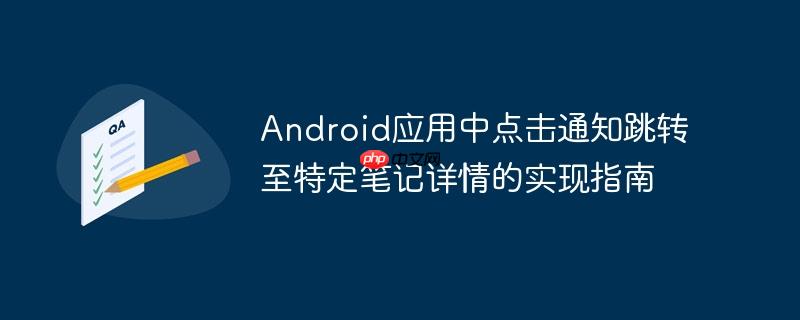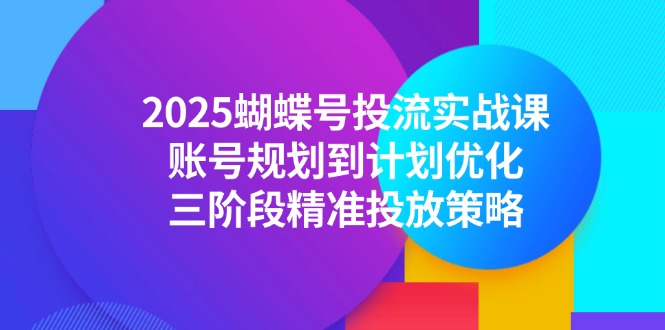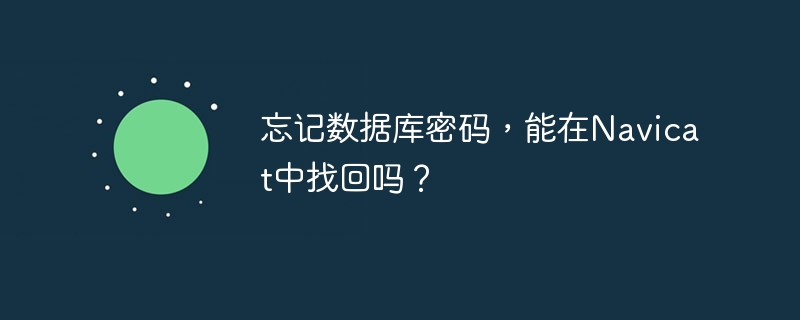
本教程详细阐述了如何在android应用中实现点击通知跳转至特定笔记详情页的功能。核心思路是在设置闹钟时将笔记的唯一标识符(ID)通过Intent传递给广播接收器,再由广播接收器将该ID转发给目标Activity。文章将通过代码示例演示这一流程,并强调使用数据库查询详情的最佳实践,以确保数据准确性和系统的健壮性。
在开发笔记或待办事项应用时,一个常见的需求是为特定条目设置提醒,并在提醒触发时通过通知告知用户。当用户点击该通知时,期望应用能够直接打开对应的笔记详情页,而不是仅仅启动主界面。本文将深入探讨如何实现这一功能,确保点击通知后能够精确导航到关联的笔记内容。
核心实现思路:通过Intent传递笔记ID
要实现点击通知跳转到特定笔记详情页,关键在于将笔记的唯一标识符(例如数据库ID)从设置提醒的地方,经过 AlarmReceiver (或任何处理通知的 BroadcastReceiver),最终传递到目标 Activity。这样,目标 Activity 就可以根据这个ID从数据源(如数据库)中检索并显示正确的笔记内容。
为什么不使用列表位置(position)? 在 RecyclerView 中,笔记的 position 是动态变化的。当用户添加、删除或重新排序笔记时,同一个笔记的 position 可能会改变。因此,依赖 position 来标识特定笔记是不可靠的。使用笔记的唯一 ID(通常是数据库主键)是更健壮和推荐的做法。
代码实现步骤
我们将分三个主要部分来展示代码实现:设置闹钟时传递数据、在 AlarmReceiver 中接收并转发数据,以及在目标 Activity 中获取并显示数据。
1. 设置闹钟时传递笔记ID
在设置闹钟的方法中,我们需要将与该闹钟关联的笔记的唯一ID附加到传递给 AlarmReceiver 的 Intent 中。
// 假设您在一个Activity中设置闹钟,并且可以访问到当前笔记的ID和标题 private void setAlarm(String noteId, String noteTitle) { Calendar calendar = Calendar.getInstance(); // 假设 hour 和 minute 已经从用户输入中获取 calendar.set(Calendar.HOUR_OF_DAY, hour); // 使用 HOUR_OF_DAY 避免AM/PM问题 calendar.set(Calendar.MINUTE, minute); calendar.set(Calendar.SECOND, 0); // 清除秒和毫秒,确保精确到分钟 AlarmManager alarmManager = (AlarmManager) getSystemService(Context.ALARM_SERVICE); Intent intent = new Intent(this, AlarmReceiver.class); // 将笔记的ID和标题作为额外数据放入Intent intent.putExtra("note_id", noteId); // 推荐只传递ID intent.putExtra("note_title", noteTitle); // 可选,用于通知显示 // 为每个不同的闹钟使用不同的requestCode,以确保它们不会互相覆盖 // 这里可以使用noteId的哈希值或其他唯一标识符作为requestCode int requestCode = noteId.hashCode(); PendingIntent pendingIntent = PendingIntent.getBroadcast(this, requestCode, intent, PendingIntent.FLAG_UPDATE_CURRENT | PendingIntent.FLAG_IMMUTABLE); // 使用setExactExactAndAllowWhileIdle 或 setAlarmClock 以获得更准确的提醒 if (android.os.Build.VERSION.SDK_INT >= android.os.Build.VERSION_CODES.M) { alarmManager.setExactAndAllowWhileIdle(AlarmManager.RTC_WAKEUP, calendar.getTimeInMillis(), pendingIntent); } else if (android.os.Build.VERSION.SDK_INT >= android.os.Build.VERSION_CODES.KITKAT) { alarmManager.setExact(AlarmManager.RTC_WAKEUP, calendar.getTimeInMillis(), pendingIntent); } else { alarmManager.set(AlarmManager.RTC_WAKEUP, calendar.getTimeInMillis(), pendingIntent); } Toast.makeText(this, "闹钟已设置", Toast.LENGTH_SHORT).show(); }
注意:
- PendingIntent.FLAG_UPDATE_CURRENT:如果PendingIntent已存在,则保留并更新其内部的额外数据。
- PendingIntent.FLAG_IMMUTABLE:在Android S (API 31) 及更高版本中,PendingIntent必须声明其可变性。通常建议使用 FLAG_IMMUTABLE 以提高安全性。
- requestCode:为每个不同的闹钟(或通知)使用一个唯一的 requestCode 非常重要。如果使用相同的 requestCode,后续的 PendingIntent 将会覆盖之前的。这里使用 noteId.hashCode() 是一个简单的策略,但更严谨的做法是维护一个递增的ID或者一个与笔记ID直接关联的唯一整数。
2. 在 AlarmReceiver 中接收并转发数据
当闹钟触发时,AlarmReceiver 的 onReceive 方法会被调用。在这里,我们从传入的 Intent 中获取笔记ID,并将其再次放入用于启动目标 Activity 的 Intent 中。
public class AlarmReceiver extends BroadcastReceiver { // 定义通知通道ID,Android 8.0 (API level 26) 及以上版本需要 private static final String channel_ID = "alarmChannel"; private static final String CHANNEL_NAME = "提醒通知"; @Override public void onReceive(Context context, Intent intent) { // 从触发闹钟的Intent中获取笔记ID和标题 String noteId = intent.getStringExtra("note_id"); String noteTitle = intent.getStringExtra("note_title"); // 可选 // 创建用于启动目标Activity的Intent Intent targetIntent = new Intent(context, NoteDetailActivity.class); // 假设您的笔记详情页是NoteDetailActivity targetIntent.setFlags(Intent.FLAG_ACTIVITY_NEW_TASK | Intent.FLAG_ACTIVITY_CLEAR_TOP); // 将笔记ID放入目标Activity的Intent中 targetIntent.putExtra("note_id", noteId); // 为每个不同的通知使用不同的通知ID,以避免覆盖 // 这里可以使用noteId的哈希值作为通知ID int notificationId = noteId.hashCode(); // 创建PendingIntent,当点击通知时启动targetIntent // 同样,这里的requestCode也应是唯一的,可以使用notificationId PendingIntent pendingIntent = PendingIntent.getActivity( context, notificationId, // 使用唯一的requestCode targetIntent, PendingIntent.FLAG_UPDATE_CURRENT | PendingIntent.FLAG_IMMUTABLE ); // 创建通知渠道 (适用于Android 8.0 及以上) if (android.os.Build.VERSION.SDK_INT >= android.os.Build.VERSION_CODES.O) { NotificationChannel channel = new NotificationChannel( CHANNEL_ID, CHANNEL_NAME, NotificationManager.IMPORTANCE_HIGH ); NotificationManager manager = context.getSystemService(NotificationManager.class); if (manager != null) { manager.createNotificationChannel(channel); } } // 构建通知 NotificationCompat.Builder builder = new NotificationCompat.Builder(context, CHANNEL_ID) .setContentTitle(noteTitle != null ? noteTitle : "提醒") // 使用传递过来的标题或默认标题 .setContentText("您有一条新的笔记提醒!") .setAutoCancel(true) // 用户点击后自动关闭通知 .setDefaults(NotificationCompat.DEFAULT_ALL) // 使用默认铃声、震动、指示灯 .setSmallIcon(R.drawable.ic_alarm) // 设置小图标,必须有 .setPriority(NotificationCompat.PRIORITY_HIGH) // 设置高优先级,以便及时显示 .setContentIntent(pendingIntent); // 设置点击通知后的行为 NotificationManagerCompat managerCompat = NotificationManagerCompat.from(context); managerCompat.notify(notificationId, builder.build()); // 使用唯一的通知ID } }
注意:
- Intent.FLAG_ACTIVITY_NEW_TASK:如果目标Activity不在栈顶,会创建一个新的任务栈来启动它。
- Intent.FLAG_ACTIVITY_CLEAR_TOP:如果目标Activity已经在任务栈中,则会清除其上方的所有Activity,并把目标Activity带到栈顶。
- 通知渠道(Notification Channel):从Android 8.0 (API level 26) 开始,所有通知都必须分配到一个通知渠道。这是为了让用户能够更精细地控制不同类型的通知。务必创建并使用通知渠道。
- 通知ID:与 PendingIntent 的 requestCode 类似,NotificationManagerCompat.notify() 方法中的 notificationId 也应该是唯一的,以便系统能够区分不同的通知。
3. 在目标 Activity 中获取并显示数据
最后,在 NoteDetailActivity (或您的笔记详情页) 的 onCreate 方法中,获取传递过来的笔记ID,并使用它从数据库或其他数据源加载笔记的详细信息。
public class NoteDetailActivity extends AppCompatActivity { @Override protected void onCreate(Bundle savedInstanceState) { super.onCreate(savedInstanceState); setContentView(R.layout.activity_note_detail); // 获取从Intent中传递过来的笔记ID String noteId = getIntent().getStringExtra("note_id"); if (noteId != null && !noteId.isEmpty()) { // 根据noteId从数据库或其他数据源加载笔记详情 // 假设您有一个NoteRepository或NoteDao来处理数据 // Note note = NoteRepository.getInstance(this).getNoteById(noteId); // 示例:这里只是一个示意,实际应从数据库查询 Note note = getNoteFromDatabase(noteId); if (note != null) { // 显示笔记详情,例如设置TextViews TextView titleTextView = findViewById(R.id.note_detail_title); TextView contentTextView = findViewById(R.id.note_detail_content); titleTextView.setText(note.getTitle()); contentTextView.setText(note.getContent()); // 根据需要设置其他视图,如背景颜色等 // getWindow().getDecorView().setBackgroundColor(note.getBackgroundColor()); } else { // 处理找不到笔记的情况,例如显示错误消息或返回上一页 Toast.makeText(this, "笔记未找到", Toast.LENGTH_SHORT).show(); finish(); } } else { // 没有笔记ID,可能直接从应用内启动,或者出现错误 Toast.makeText(this, "无效的笔记ID", Toast.LENGTH_SHORT).show(); finish(); } } // 模拟从数据库获取笔记的方法 private Note getNoteFromDatabase(String id) { // 实际应用中,这里会执行数据库查询,例如使用Room、SQLiteOpenHelper等 // 为了示例,我们返回一个模拟的Note对象 // 假设您的Note类有id, title, content等字段 // 实际应该根据id查询数据库并返回对应的Note对象 if ("myId".equals(id)) { // 假设"myId"是我们在setAlarm中传递的示例ID return new Note("myId", "示例笔记标题", "这是示例笔记的内容。"); } return null; } }
最佳实践:
- 只传递ID: 强烈建议只通过 Intent 传递笔记的唯一ID。笔记的标题、内容、日期、背景颜色等详细信息应在目标 Activity 中根据这个ID从数据库(或网络API)中查询获取。这样做有以下几个优点:
- 数据一致性: 如果笔记内容在闹钟设置后被修改,通过ID查询可以确保显示的是最新的数据。
- Intent大小限制: Intent 有大小限制,传递大量数据可能导致 TransactionTooLargeException。
- 安全性: 减少敏感数据在 Intent 中的暴露。
- 数据库查询: 在 NoteDetailActivity 的 onCreate 方法中,使用传递过来的 noteId 执行数据库查询来加载笔记的完整详情。例如,如果使用 Room 持久性库,您会调用 noteDao.getNoteById(noteId)。
总结
通过上述步骤,我们实现了一个健壮的Android通知点击跳转特定笔记详情的功能。核心在于利用 Intent 在组件间传递笔记的唯一标识符(ID),并在目标 Activity 中根据该ID从持久化存储中检索完整数据。遵循只传递ID并结合数据库查询的最佳实践,可以确保应用在处理动态数据和维护数据一致性方面的可靠性。同时,正确使用 PendingIntent 的 requestCode 和 flags,以及处理 Android 8.0+ 的通知渠道,是构建高质量通知体验的关键。

















